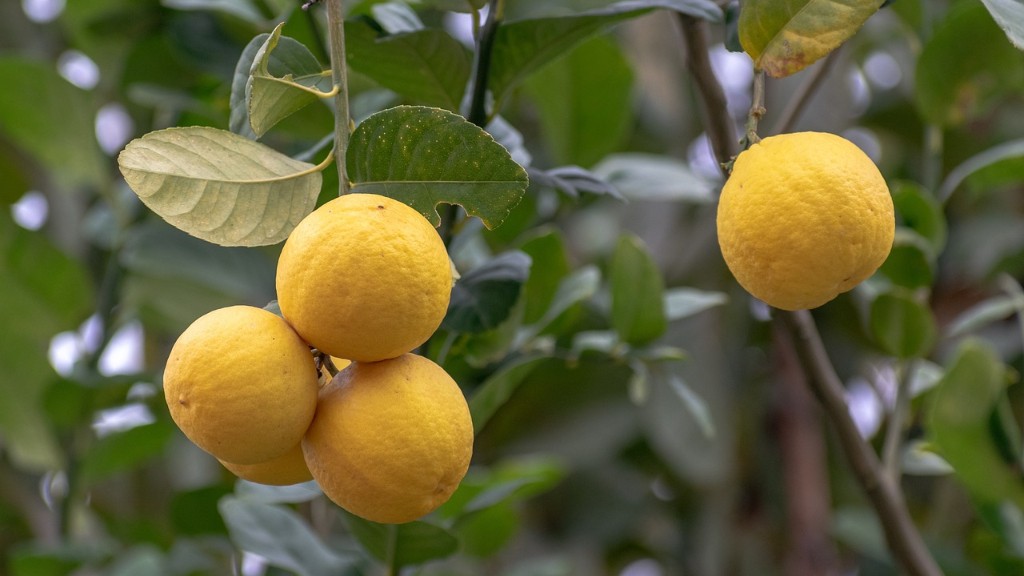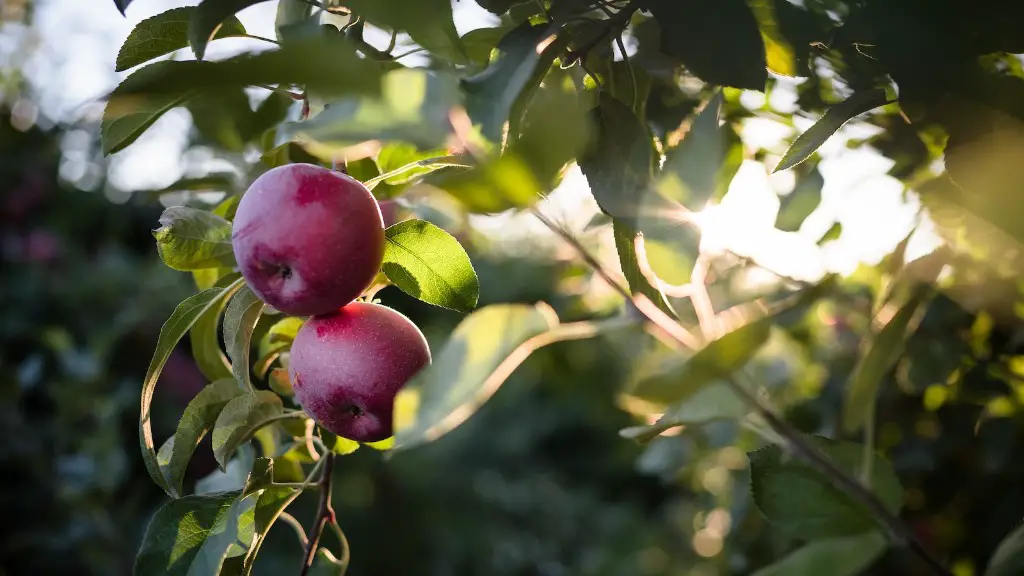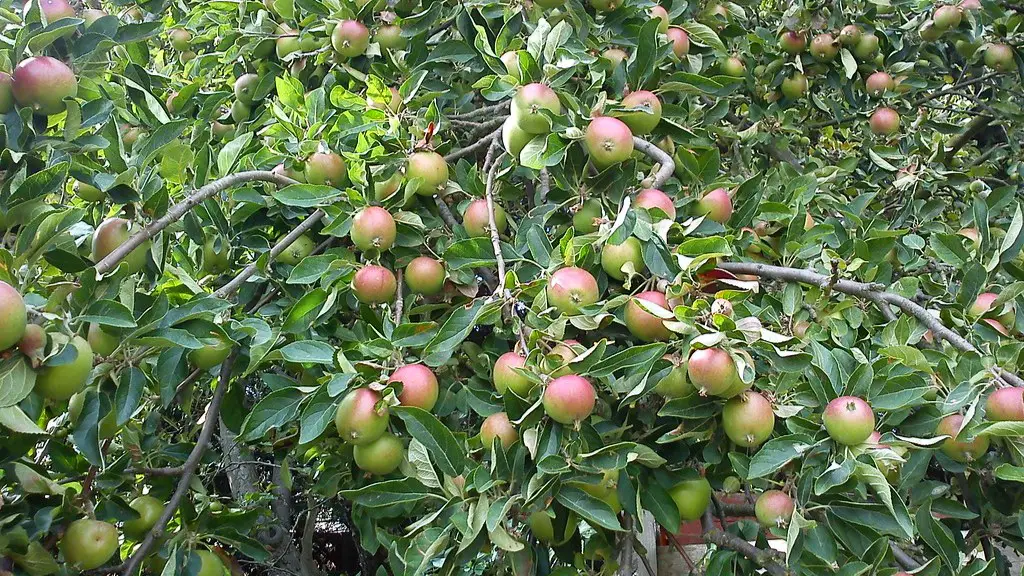When is a Good Time to Plant a Lemon Tree?
Planting a lemon tree can be an incredibly rewarding endeavor. Picking lemons from your own tree after months of proper care and nurturing can be truly satisfying. But when it comes to planting a lemon tree, timing is important. Lemons thrive in certain climates, and to ensure their proper growth, it’s important to consider when you’re planting.
Generally, the best time to plant a lemon tree is in the early spring. Warmer months of the year encourage better growth, but the intensely hot summer months can cause a lemon tree to become stressed out. Planting in the early spring gives a lemon tree a chance to establish itself before the summer months.
In some areas, the cold winter months can bring temperatures that drop below freezing. If you’re concern that the cold may be an issue, a better time to plant might be towards the end of the winter season. That way, the cold winter months are past and your lemon tree can start settling in before the hot summer months.
The environment in which you decide to plant a lemon tree is also important. Lemons should be planted in soil with a pH of 6.0 to 6.7 and should have ample soil drainage. Planting in an area with poorer soil drainage may cause your lemon tree to become root bound and may lead to the onset of fungal diseases. Additionally, the area should have good air circulation to allow for the plants to receive adequate amounts of oxygen.
Once planted, a lemon tree may take up to a year before it starts producing fruit. As such, patience is key. Lemon trees do not require a lot of maintenance, but that doesn’t mean they should not be taken care of. Proper pruning and mulching will help ensure proper growth, as will ensuring that they receive the adequate amount of water and fertilizer.
How to Choose a Lemon Tree
Choosing the right type of lemon tree is important. There are many varieties of lemon trees available and selecting the right one will depend on your area’s climate and the amount of space that you have. Common varieties of lemon trees include the Meyer lemon tree, which is an evergreen tree that is known for its cold hardiness, and the Eureka lemon tree which is recommended for warm climates.
No matter which type of lemon tree you select, it must be planted in an area with lots of sunlight. This is important as lemons require plenty of sunlight in order to ripen and sweeten. Planting a lemon tree in an area with filtered sunlight or shade may reduce its ability to produce fruit.
It’s also important to check your local regulations when purchasing a lemon tree. Some areas require permits and may enforce certain restrictions when it comes to planting or owning a citrus tree. Also, make sure to take into consideration the size at mature age of the lemon tree. This is important to ensure that you have enough space for it to properly grow.
Understanding the size, climate and requirements of your particular lemon tree variety is essential for its long-term health and success. Taking the time to select a tree that you will be able to properly care for will help guarantee that your lemon tree is a long-term success.
Finally, don’t forget to inspect your lemon tree for any signs of disease. Inspecting the leaves, fruit and overall health of a lemon tree will help you identify any potential issues and guarantee that your lemon tree is healthy and ready to be planted.
How to Plant a Lemon Tree
When you have found the right tree, it’s time to start preparing the area where you’re planting it. Remove any rocks, roots or debris that may impede the growth of the lemon tree. To provide adequate soil drainage and ensure your lemon tree’s root develops robustly, make sure to create a hole that is twice as wide as the lemon tree’s root ball.
When you’re ready to plant, first remove the root ball from the pot. Gently loosen the root ball and spread its roots out in the planting hole. You may need to trim the roots in order to fit them in the hole. Make sure the lemon tree is firmly rooted in the soil, with its root ball flush against the ground. Fill the remaining space in with soil and press it lightly with your foot.
Once the tree is firmly in the ground, it’s important to use some mulch around the tree’s trunk. This will help ensure that the soil remains moist and will also help prevent weeds from growing around the tree. But make sure to keep the mulch away from the trunk of the tree, as this can lead to disease and rot.
Finally, make sure your lemon tree has enough water. During the summer months, when temperatures are more intense, you will need to water your lemon tree more regularly. Also, ensure that your lemon tree is getting the right nutrients. Depending on the type of soil you have, you may need to apply fertilizer and if you wish to, you can also supplement your lemon tree’s diet with an organic citrus fertilizer.
Taking these extra steps when planting a lemon tree will help guarantee healthy growth. While it may take up to a year for your lemon tree to produce fruit, with the proper care and regular maintenance, it may soon be filled with sweet lemons.
How to Care for a Lemon Tree
After planting your lemon tree, you will need to take some steps in order to ensure its proper growth and maintenance. Pruning is an important step which, if done correctly, will help encourage new growth and when done regularly, will help shape a lemon tree’s canopy. Additionally, check on your lemon tree’s soil if it’s getting enough hydration and if it might need some additional fertilizer.
In areas where the winter months can be cold and bring temperatures below freezing, it’s important to ensure that your lemon tree is properly insulated. Providing a frost cloth or some kind of insulation will help your lemon tree make it through the cold temperatures unharmed. Also, make sure to keep an eye on the weather and to water more often in instances of dry weather.
Regularly monitoring your lemon tree for signs of disease and pests is important. Many citrus trees suffer from the citrus greening disease which is spread by the Asian citrus psyllid. If you see signs of yellowing leaves or stunted growth, you should consult a professional for further advice.
Birds and other mammals are also famous for raiding lemon trees and eating their fruits. Using bird netting or other deterring or trapping methods should help reduce the amount of fruit-thieves in your lemon tree.
Taking proper care of your lemon tree is important. Having a lemon tree with plenty of fruit is rewarding but only achievable if proper care is taken. Understanding your lemon tree’s needs and learning how to properly care for it is essential for its growth and success.
How to Harvest Lemon Tree Fruits
A mature lemon tree can produce an abundance of sweet and juicy lemons in just a little over a year. To harvest the lemons, you simply need to remove them from the tree. Make sure to check their color before picking them, as some lemons may need more time to ripen. If possible, try to avoid using excessive force in order to avoid damaging the lemon tree’s branches.
Once you’ve picked them, examine the lemons for any signs of spoilage or insects. Any damaged lemons should be discarded and not consumed. Store the lemons in a cool and dry place and try to use them as soon as possible. If you don’t think you’ll be able to consume the amount of lemons your tree produces in a timely manner, freezing the lemons can help preserve them for a longer period of time.
When harvesting lemons, it’s important to practice proper safety procedures. Wear gloves and long-sleeved clothing to reduce the risk of contact with the lemon tree’s thorns. And if you plan on using any kind of tools, such as pruning shears, make sure to wear protective gear like eye-shields.
In some cases, picking lemons will require ladders or scaffolds. Make sure to use the proper safety protocols when using these tools. Always make sure the ladder or scaffold is securely in place and when reaching for a particular lemon, try not to lean too far in the direction of the tree’s branches. Follow these safety protocols in order to guarantee your safety when harvesting your lemon tree’s fruit.
Examine the harvested lemons for any signs of disease or pests and discard any unhealthy-looking fruits. Also, do not forget to mulch and fertilize your lemon tree after harvesting. These steps will help ensure that your lemon tree’s blossoms and fruits remain healthy and sweet.
Conclusion
Planting and caring for a lemon tree can be a great experience and one that comes with the reward of juicy and sweet lemons. To successfully grow a lemon tree, timing is essential, as is properly understanding the needs of the particular lemon tree variety chosen and the environment in which it’s planted. Taking these extra steps, as well as paying attention to its growth, will help guarantee a successful lemon tree.





